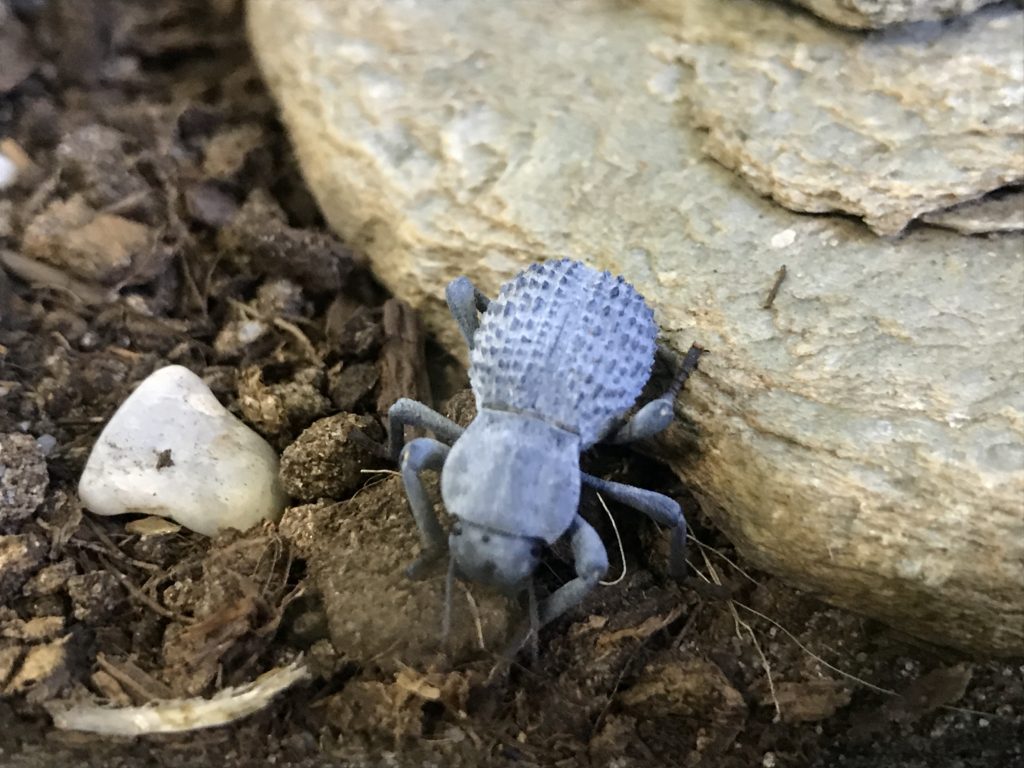
What is a Blue Death-Feigning Beetle?
This species, Asbolus verrucosus, is a tenebrionid beetle uniquely adapted to living in the hot, dry southwestern deserts of the USA. The unique coloration of the blue death-feigning beetle is due to a waxy secretion that may help protect the beetle from the hot sun. When disturbed, the blue death-feigning beetle may become completely immobile for some time, Hence the term ‘death-feigning’. This beetle is extremely hardy and very long-lived, not to mention fascinating to watch as it goes about its business. For this reason, the blue death-feigning beetle is becoming more and more popular as a pet, and just may be the best pet beetle.
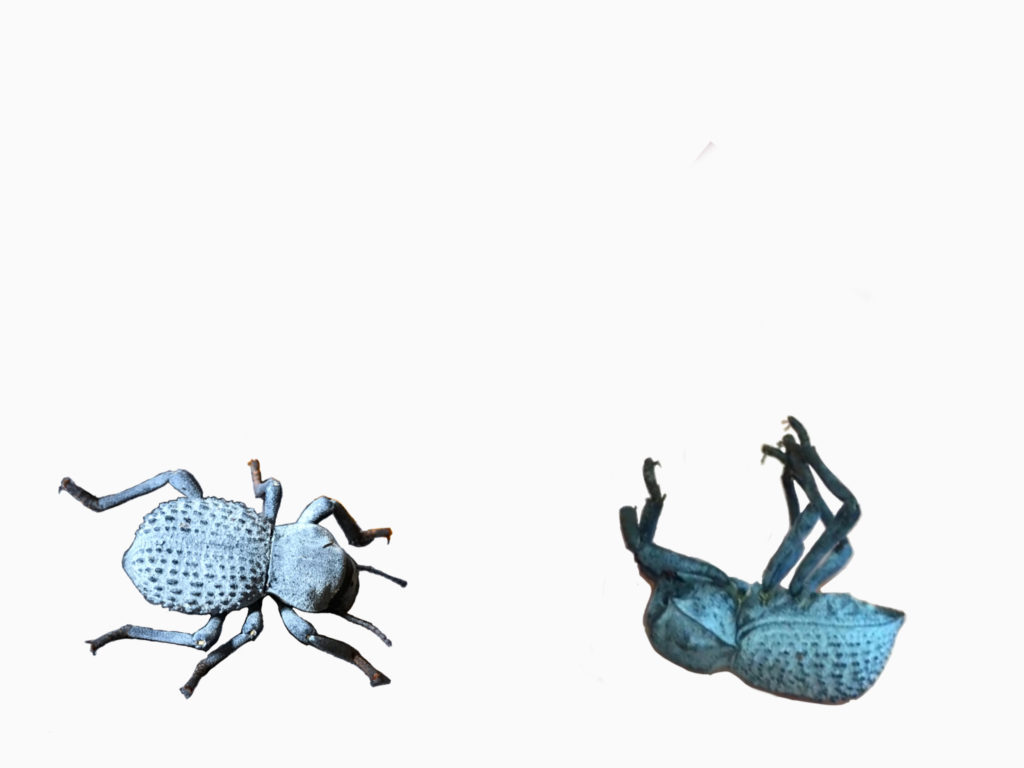
Enclosure
A Blue Death-Feigning Beetle enclosure can be fairly simple and inexpensive, or it can be much more elaborate. The beetles are active, so they need some space to move around in. They also need excellent ventilation. For an attractive enclosure with excellent visibility and ventilation, I prefer to use glass enclosures with screen lids. I currently have a number of Blue Death-Feigning Beetles in a 20-gallon reptile enclosure with a screen lid, something like this one. I recommend buying a glass enclosure this large at a local pet store, or even used from local online classifieds, rather than online, to save money:
On the simple side, a plastic pet keeper such as this can work, but does not allow for a thermal gradient. For long term care, consider a larger glass enclosure.
Fortunately, the beetles cannot climb smooth glass.
Lighting/heating
Blue Death-Feigning Beetles are quite hardy, and can live long lives at room temperature with ambient light. However, they may be more active if the temperature conditions are similar to those they encounter in the wild. I use enclosures with metal screens, which allows me to provide heat and light from a lamp on one side, and thus to provide a thermal gradient. The hotspot does not need to be warmer than 85 F.
For my 20-gallon long enclosure, I use a fixture and bulb like these:
Note that the bulbs are only used to provide heat and visible light. Unlike many reptiles, Blue Death Feigning Beetles do not require UVB lighting.
Substrate
Blue-Death Feigning Beetles, since they are desert animals, do well with a desert substrate, but this does not mean that pure sand is the best substrate for them. Adult beetles can live on it long term, but it does not seem to provide a very good environment for the larvae, which can dessicate easily. You may want to add organic material and clay to provide a better environment for the larvae by retaining moisture in the deeper layers, and a dry surface for the adult beetles. You may wish to purchase a substrate intended specifically for these beetles and similar organisms.
Decor
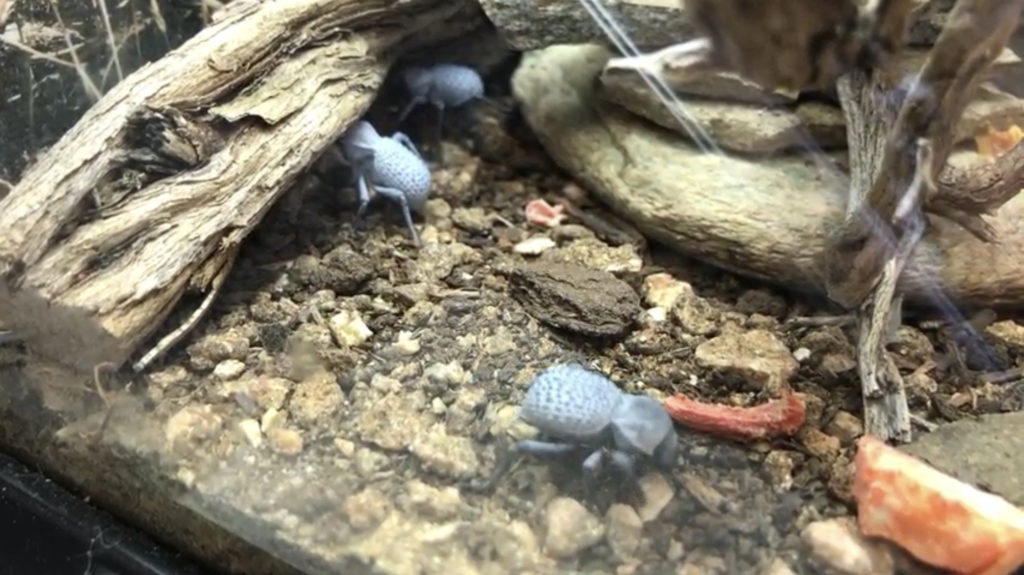
In addition to a base substrate, Blue-Death Feigning Beetles appreciate plenty of rocks and pieces of wood to climb on and to hide among. Cholla cactus skeletons look decorative, and naturally occur in the habitat of Blue Death-Feigning Beetles:
You can also collect your own decor, but make sure it does not introduce any unwanted creatures to your beetles’ enclosure.
Food and Water
Blue Death-Feigning Beetles can go a long time without food or water, but normally, they have hearty appetites and should be fed several times per week. They are omnivorous beetles, with a preference for protein-rich food. Mine will eat dead crickets as seen here:
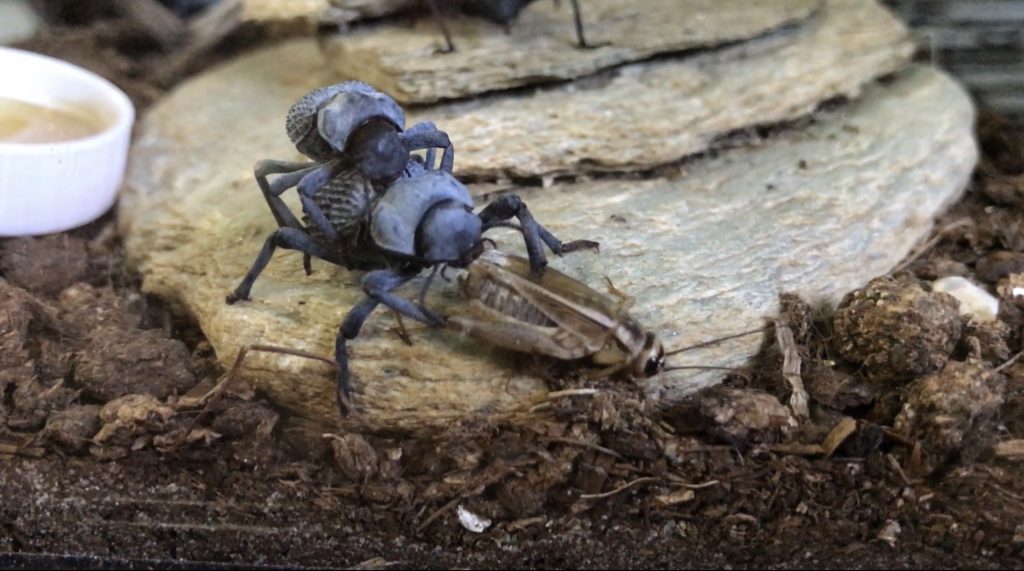
They also eat dried river shrimp, which are sold as food for aquarium fish and turtles:
Another high-protein food source they will eat is pet food, such as fish flakes, or cat or dog food.
Vegetables and occasional fruits provide both food and water to your Blue Death-Feigning Beetles. Chopped organic carrots are a staple I use. I also offer zucchini, cucumber, sweet potato, and occasionally bits of melon or apple.
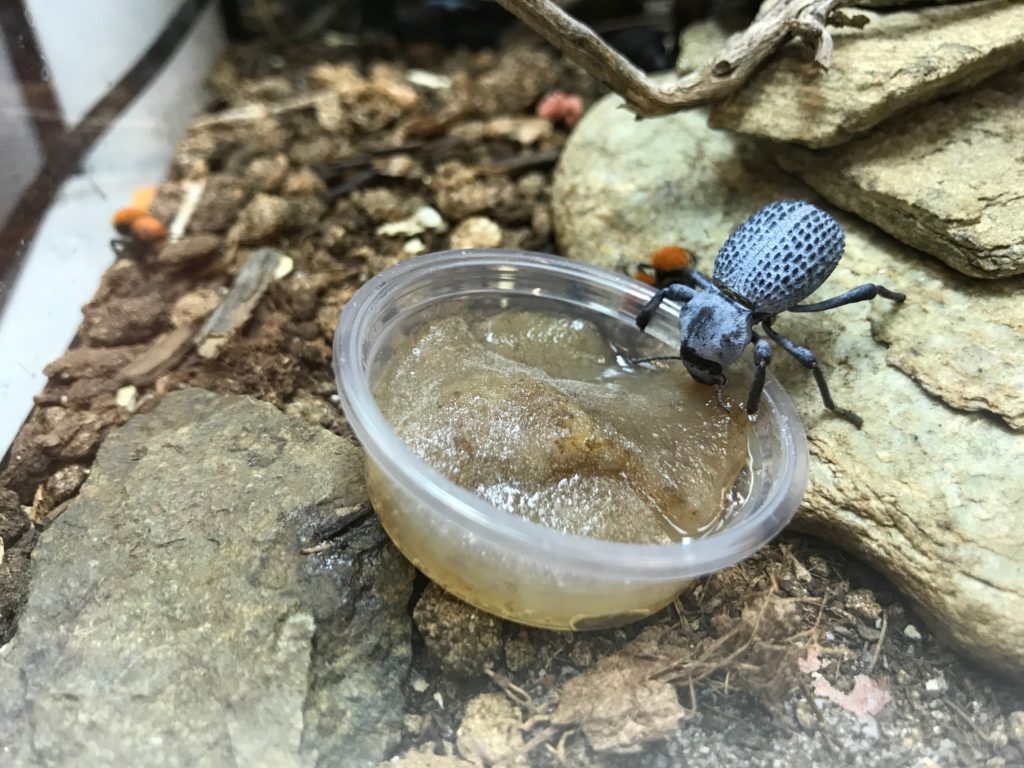
Beetle Jelly is also a good occasional treat item, but not a staple, since these beetles live mostly on a protein-based diet. You can buy it ready-made, or watch my video to learn how to make your own:
Juicy vegetables will provide enough water for your beetles. It can be a good idea to mist one corner of the enclosure every week or so. I have seen my BDFBs drink droplets from the glass of their enclosure when I mist it.
Breeding
Blue Death-Feigning Beetles will mate and lay eggs often in captive conditions, as long as you keep males and females together. The larvae look a lot like mealworms, although they get larger. The difficult part about captive breeding BDFBs is that the larvae don’t tend to pupate. Dean Ryder cracked the code on this one. In this thread, he indicated how they will pupate when isolated in their own containers at temperatures between 80 and 88 F, with 75-80% relative humidity. I have successfully raised beetles to adulthood in this way.
http://arachnoboards.com/threads/inducing-bdfb-to-pupate.280289/
Coloration
Healthy Blue Death-Feigning Beetles kept in appropriate humidity and good ventilation have a light blue color to them, from the waxy secretion that protects them from the sun. If the beetles get wet, they will temporarily become much darker in color. It only takes a few days for their color to return to normal. If your beetles seem to dark, yet u should probably improve ventilation and/or reduce the amount of water that enters their habitat.
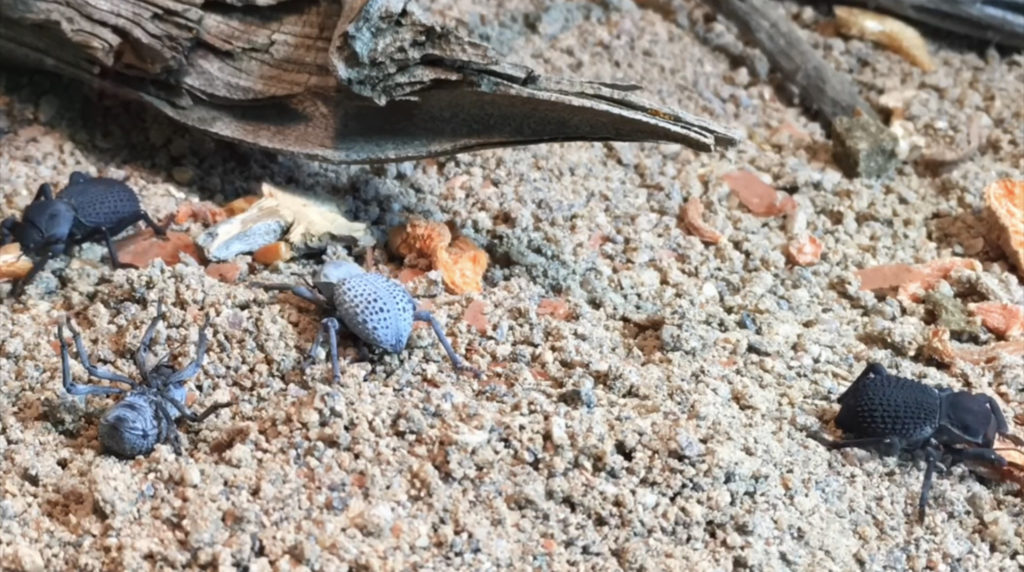
If you take good care of your Blue-Death Feigning Beetles, you may have them for years…it is said that at least one BDFB lived for 17 years!
For more information on Blue Death-Feigning Beetles, check out my videos:
